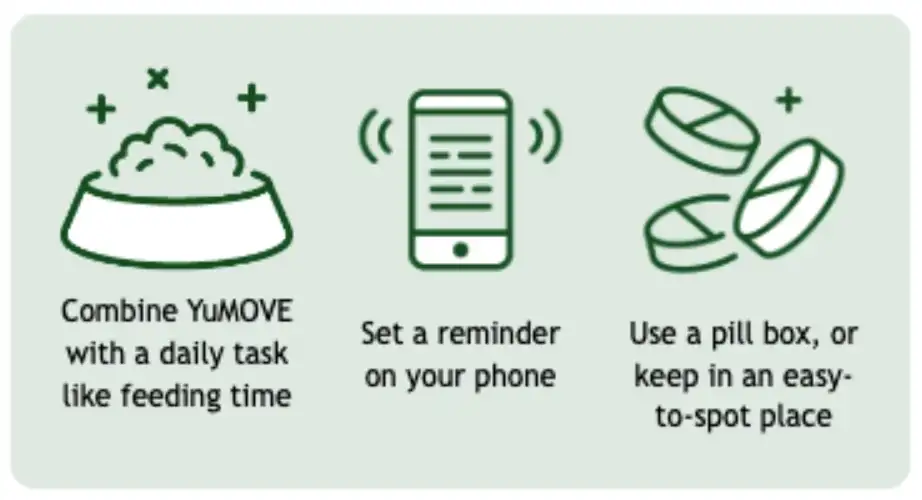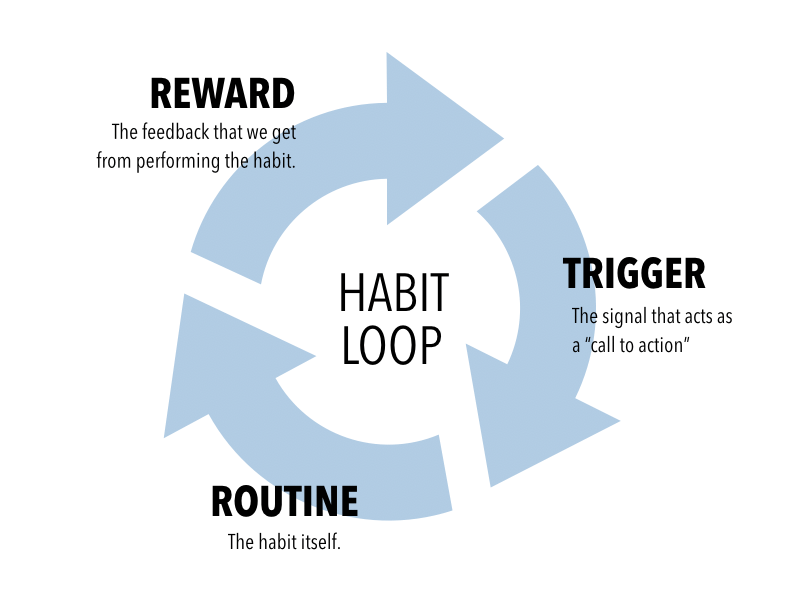My seven-year-old dog has been struggling with arthritis in her elbow, so our vet recently recommended YuMOVE - a joint supplement for dogs.
As you can imagine, pet health is an emotional subject for many folks. We want to take good care of our pets, but it's not easy to create a new habit around a new behavior (like automatically remembering to give your dog joint supplements every day).
You can watch the video breakdown below, or keep reading.
When I recently received the email below, I was blown away by YuMOVE's attention to owners' behaviors, and their suggestions on how to change.
See if you can spot the section that impressed me so much:

That’s right, it’s this section:

The email suggests habit triggers to encourage folks to remember to give their dogs supplements. But to unpack why this is so effective, let’s back up and talk about how habits are created in the first place.
It’s down to a concept known as the Habit Loop:
🚀 Learn what makes buyers tick
Join 8k+ of world's best marketers from brands like Disney, Coca-Cola, Google who are learning marketing psychology in <5 mins a week.
What is the Habit Loop?
In the 1990s, researchers at the Massachusetts Institute of Technology (MIT) decoded the structure of habits. They coined the so-called “Habit Loop” which describes the patterns that make up a habit.
The loop consists of three parts:
- The trigger (or cue): These are signals that it’s time to perform our habit. The three examples in this email are types of triggers (combining the product with daily meal time, setting a reminder on your phone, or leaving the pills in an easily noticed place).
- The routine: This is the habit itself. In this case, the routine is the act of feeding your dog its daily supplements.
- The reward: This is the payoff you get from performing your habit. For our dog supplement example, this can be tricky since the positive effects are long-term and hard to monitor.

Source: Created by the author
To understand what makes the YuMOVE email so effective, let’s dive deeper on habit triggers.
5 Types of Habit Triggers + a Bonus
Studies have shown there are five basic categories of habit triggers.
1. Time
Time of day can be a signal to perform a habit. For example, you might eat breakfast every day at 7:30 am because “it’s time for breakfast” and not because you’re hungry.
2. Mood
Habits can form as ways to self-soothe. You might smoke because you’re stressed out, overeat because our boss yelled at us, or we the gym for Netflix because we’re emotionally exhasted after a long day at work.
3. Location and Context
Your environment can be a habit trigger. For example, if you’re trying to quit smoking but you walk into a bar, you can be triggered by the smell of smoke, the availability of cigarettes, alcohol, and friends that smoke.
That’s also why a move or vacation can be a catalyst for breaking bad habits.
4. Preceding Action
According to research, it’s easier to make a habit stick if it’s built off an existing chain of action rather than pure motivation.
For example, it’s easier to say, “I will exercise at 5 pm right after I close my laptop for the day” than to say, “I will exercise today.” This approach can work in reverse as well if you’re trying to identify the cue for a bad habit.
5. Other People
The people you surround yourself with — particularly your friends — can change your habits. As social psychologist Amber Gaffney put it:
“The more of your identity you draw from a group, even when you’re not around that group, the more likely you are to uphold those values.”
A 2014 study found that our social group can influence us to keep our good habits, like sticking to a diet, or encourage us to break the rules. When it came to resisting temptations, the study found that friends were more likely to become our “partners in crime.” So make sure your friends are working for you, not against you.
Bonus: Prompts
Prompts are physical reminders to perform an action.
Although this is not one of our five habit triggers, prompts can be very effective in getting people to perform an action (like feeding their dog its supplements).
Examples of prompts could be alerts or alarms on your phone, an email, push notifications on smartwatches, or even a note on the fridge that reminds yourself or others to do something.
Here’s How YuMOVE Used Habit Triggers
As a reminder, here are the three habit triggers the brand mentioned in its email:

Can you spot which of the 5 habit triggers YuMOVE is using?
- “Combine YuMOVE with a daily task like feeding time.” This could fall under several habit triggers such as Preceding Action or Time.
- “Set a reminder on your phone.” This is an example of a prompt that reminds you to feed your dog its supplements at a certain time.
- “Use a pill box, or keep in an easy-to-spot place.” This strategy combines several approaches: A Prompt and “Location & Context.” If you put the dog supplements in an easy-to-notice place, they can serve as a physical reminder (or prompt) to give your dog its pills. And if you put an easy-to-spot container, like a pill box, near your dog’s food for example, this could be considered a “Location & Context” trigger.
The Bottom Line: How to Make Your Product a Habit
Many brands make great products and creative advertising, but they don’t have a clue about how to get their customers to change their behaviors and use their products habitually.
In fact, research from WARC and the Behavioural Architechts says the number one reason people don’t adopt new products is because they don’t create a new habit to go along with it.
If you want to help customers make using your product a habit, start by asking yourself:
- What would it look like for our product to be used habitually? When, where, and how often would customers use it?
- What could be a few triggers that might help people create a habit with our product? Use the five habit triggers to brainstorm some suggestions for customers.
- Which communications channel would be the most effective for suggesting these triggers to customers?
